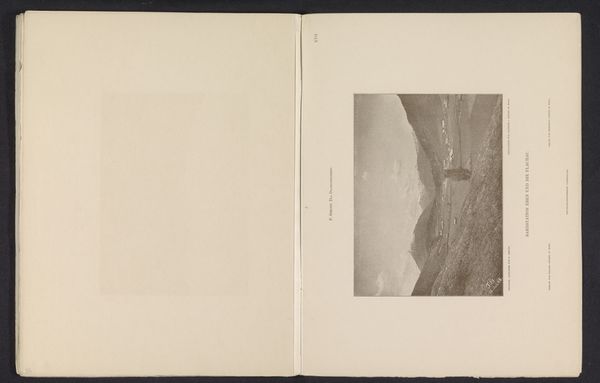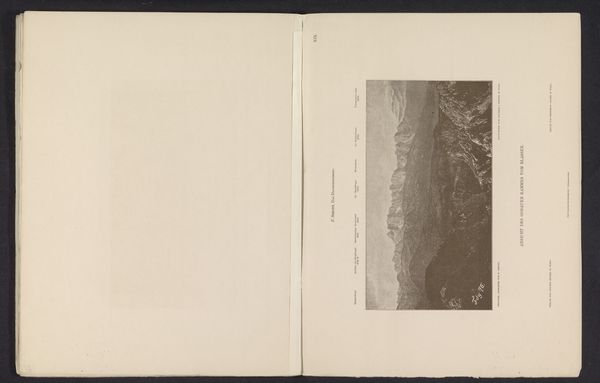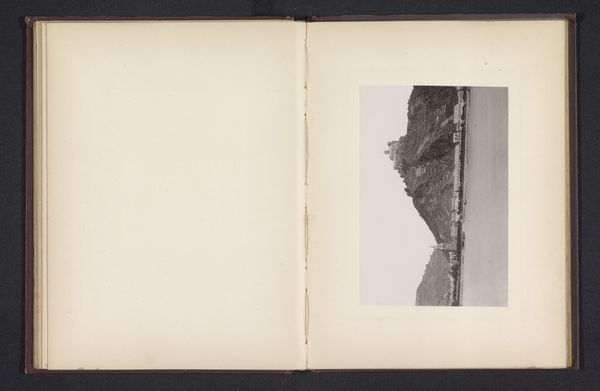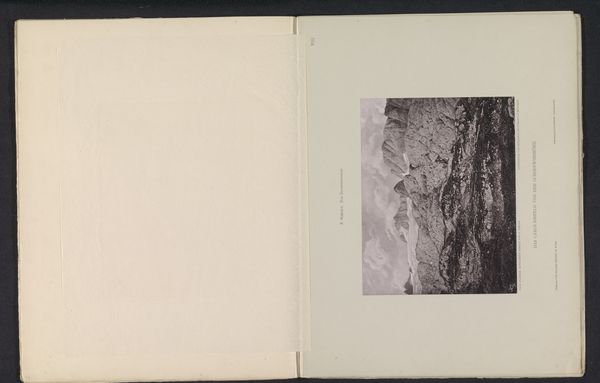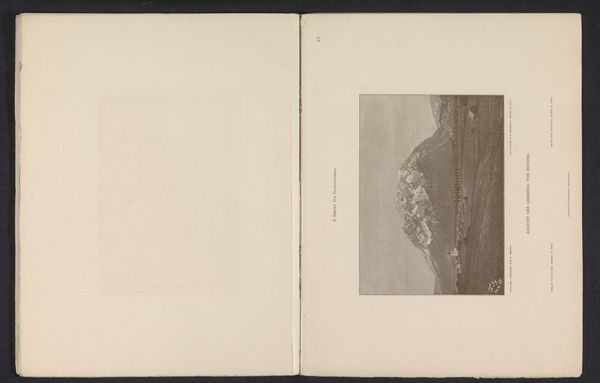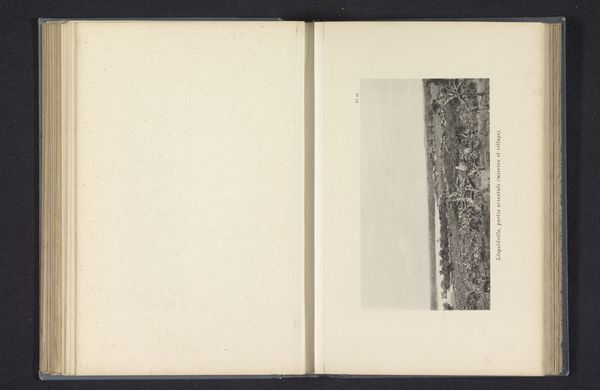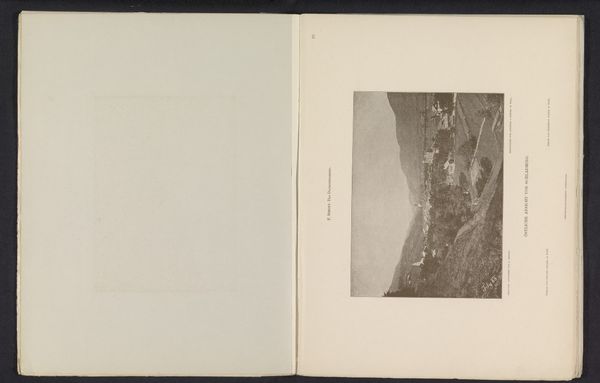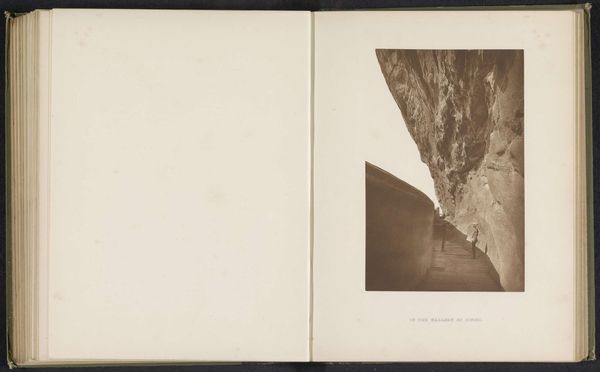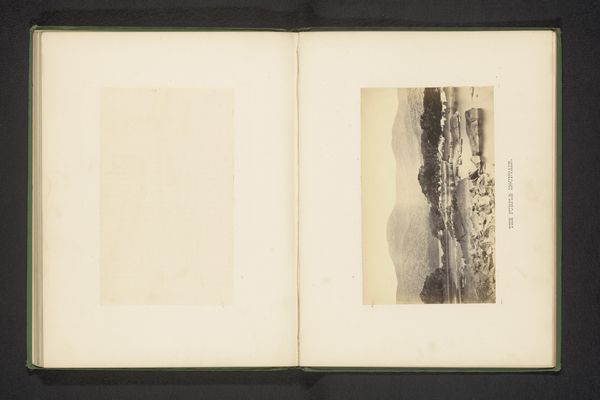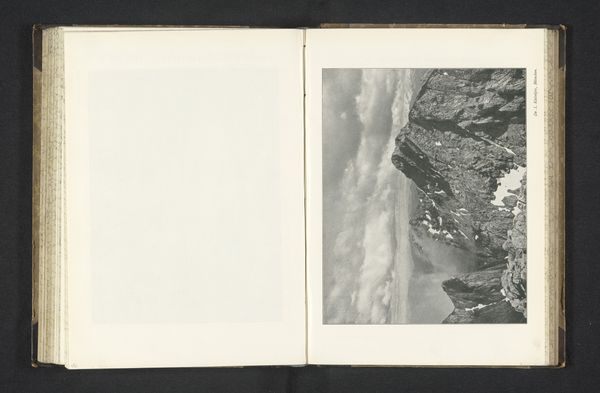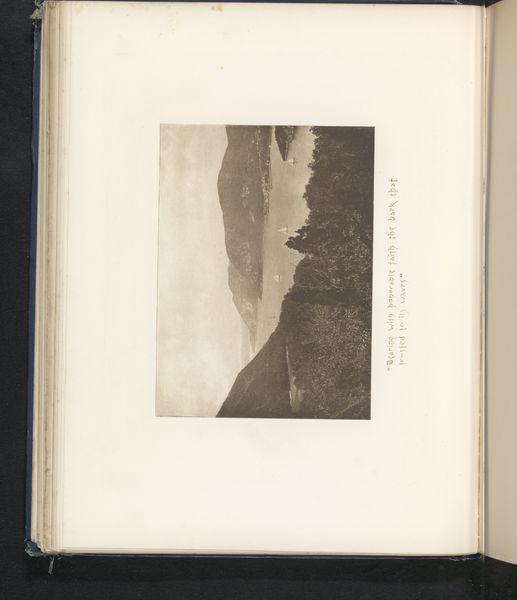
print, photography
# print
#
landscape
#
photography
Dimensions: height 142 mm, width 195 mm
Copyright: Rijks Museum: Open Domain
Curator: This work by Friedrich Simony, titled "Gezicht op Sankt Martin am Tennengebirge," created around 1887, captures the Austrian landscape in tones of grey. The artwork is presented in a printed photograph. What are your initial impressions? Editor: My eye is immediately drawn to the almost monochrome palette and its compositional choices; there's a stark interplay between the colossal mountain form on the left and the small-scale elements defining the inhabited valley on the right. Curator: Yes, let's consider Simony’s landscape work as part of a burgeoning industry that provided images for tourists and promoted certain picturesque narratives. The reproducible nature of photography allows these views to proliferate beyond unique paintings. Editor: The reproducible aspect is intriguing. Can we explore the subtle contrasts Simony employed? The granular textures of the print enhance its atmospheric feel, inviting us to examine the visual dynamics that organize it, almost inviting the viewers to insert themselves into the frame. Curator: I find it fascinating how this type of image facilitated access to specific, cultivated ideas of landscape, especially considering tourism's effect on the area's infrastructure, hotels and trails for accessing viewpoints just like this one. Consider too, the material cost involved. The printing press that gave us this image changed the material landscape. Editor: Indeed, those material realities do invite us to question assumptions and expectations that shape perception and representation. Even within a limited tonal range, the textures guide us, creating depth within a flattened plane and establishing contrasts within nature's grandeur. Curator: In this image, we see more than just trees and mountains; we are seeing capital investments and shifting patterns of material distribution that supported that specific, fleeting moment in time. Editor: And with the use of a muted photographic palette, one sees this instant is fixed into this print format; a specific artistic representation that, on examination, becomes a statement within that same landscape. Curator: The photograph allows us to look closely at this historic viewpoint. It provides, in its tones, insights into production chains, labor and the relationship that all share with a specific geography. Editor: By attending to these contrasts, we sharpen our sense of form and spatial configuration in nature and manufactured realities that shape art itself.
Comments
No comments
Be the first to comment and join the conversation on the ultimate creative platform.
